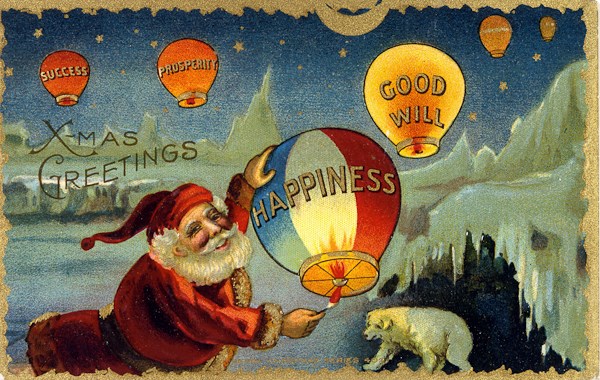We live in an age of disbelief. In a season traditionally full of reverence and celebration, in recent years some may have found under their Christmas trees, Richard Dawkins’ book, The God Delusion and Christopher Hitchens’ God is Not Great (subtitled How Religion Poisons Everything).
At age seven, my wide-eyed daughter had been troubled by doubt. It started after visiting Santa at the mall. Because she hadn’t decided what she wanted for Christmas, Santa told her, “When you’ve made up your mind, tell your mom and dad.”
After that, she began entertaining conspiracy theories and doubting her own parents. “It’s you, isn’t it,” she’d challenge me. “You’re Santa, right?”
I explained to her that the Santa in the mall was just one of Santa’s look-alike helpers and that Santa’s local representatives are human and may misrepresent him. I have to confess my first thought had been to sue Santa.
Why would he say such a thing? Was he intentionally downloading his job onto parents? Are we supposed to e-mail letters to Santa ourselves or line up at the mall again just to tell him what our kids want?
I didn’t return to the mall. Even with the photo, I’d never be able to identify the right Santa. They all look the same to me.
Santa’s not the problem. Like other icons of belief, it’s the abuse of his image by individuals and organizations that confuses and misleads the world.
A child’s belief in Santa parallels cognitive, emotional and spiritual development. To young children who understand the world in black and white terms, Santa’s an old man in a white beard who lives far away at the top of the world, watching and judging everything they do.
This version of Santa for the simple of heart and mind is a bit petty — he only gives presents to good little boys and girls. In the old days, noncompliant kids would get a lump of coal, which we now know to be carcinogenic. Authority figures such as parents and teachers sometimes leverage this simplistic understanding in order to get kids to behave.
Eventually, most children realize that life doesn’t follow such simple rules. Some keep getting presents no matter how naughty they’ve been while many nice kids get no presents.
Like parents, commercial institutions seize the Santa image for their own purposes — in this case, to make a profit. By so doing, they poison everything and contaminate a child’s simple faith.
Many lose faith when they don’t get what they’ve hoped and prayed for. Commercialism has blurred the distinction between our wants and needs. We are conditioned to crave the latest games, toys and fashions. In the big view of real life, we ultimately receive what we need though it may not have been what we wanted or expected.
As children mature, they scrutinize adult behaviour. The advice to “do as I say and not as I do” convinces no one. Many a child has lost their belief in the Tooth Fairy because of a parent’s disbelief. Again and again, fathers are caught with their hands under their children’s pillows because they themselves could not believe she would come.
As I grew up, I realized that my conception of Santa was too limiting. Although it’s comforting to imagine his traditional image, I knew he must be more than he appeared to be. That chubby old man would have died from diabetes or a heart attack centuries ago.
My faith is not dependent on a fantasized image of the North Pole. If I were to venture to the far north and find no elves, reindeer or Fortress of Solitude, my worldview would not be shattered.
I see Father Christmas all around me, here and now. My faith is renewed when I engage in the endless exchange of kindnesses and when I witness gifts given from the heart — with special thought, in appreciation of others and with unbridled and unconditional affection.
A Christmas present is not a material thing, but it is material to our daily lives. It is the gift of the moment — what we have now and the relationships before us. It is the potential of the past realized. It is tomorrow’s memories in the making.
It is the recognition of the divine in our present lives — in others and in our selves. It is the acceptance of what is — naughty and nice, faith in the good within us and love unconditional. In an age of disbelief, I am a believer. My faith has been tempered by a questioning mind and emboldened by experience.
Dr. Davidicus Wong is a family physician. His Healthwise column appears regularly in this paper. For more on achieving your positive potential in life, read his blog at davidicuswong.wordpress.com.



